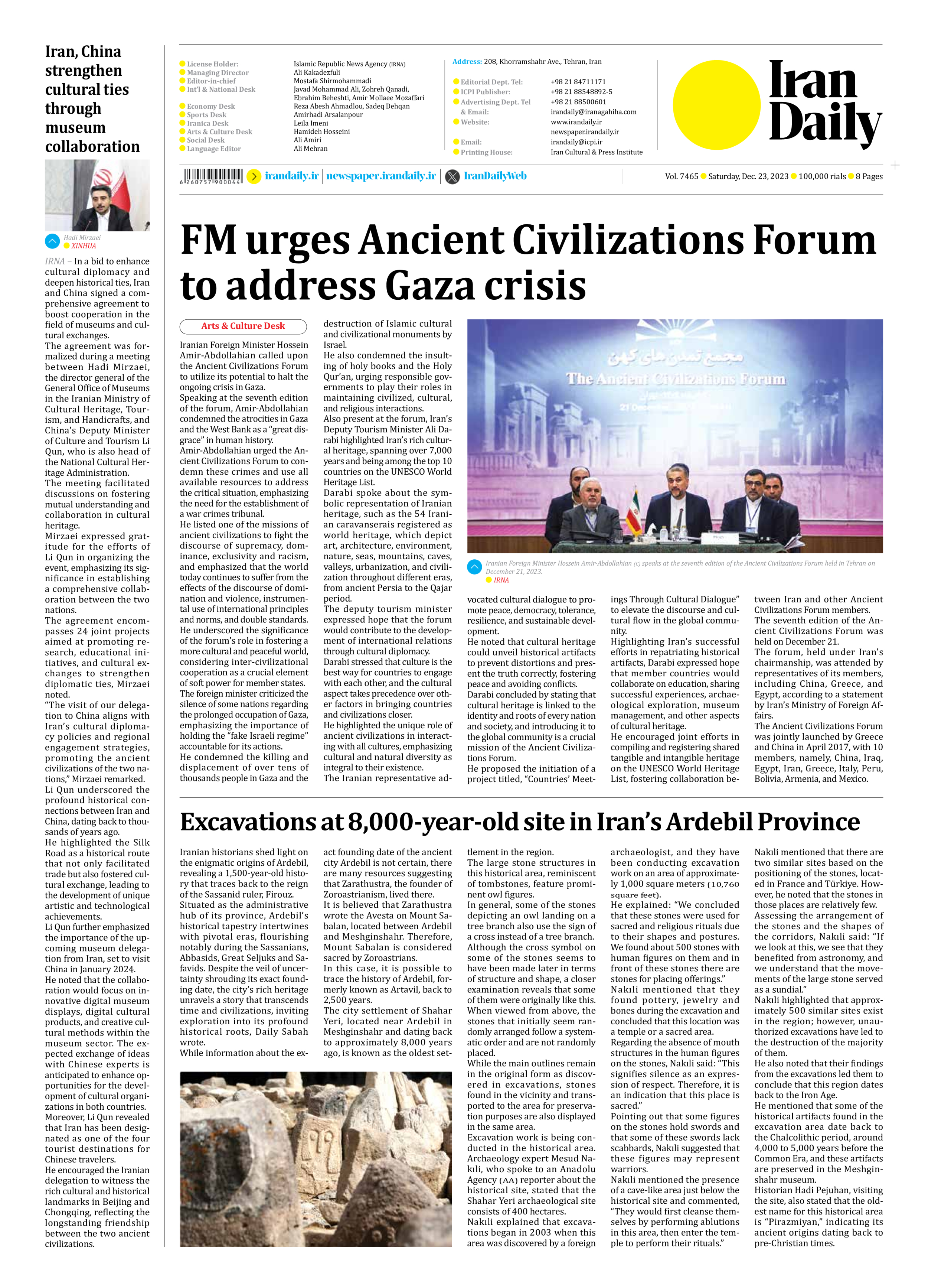
Excavations at 8,000-year-old site in Iran’s Ardebil Province
Iranian historians shed light on the enigmatic origins of Ardebil, revealing a 1,500-year-old history that traces back to the reign of the Sassanid ruler, Firouz.
Situated as the administrative hub of its province, Ardebil’s historical tapestry intertwines with pivotal eras, flourishing notably during the Sassanians, Abbasids, Great Seljuks and Safavids. Despite the veil of uncertainty shrouding its exact founding date, the city’s rich heritage unravels a story that transcends time and civilizations, inviting exploration into its profound historical roots, Daily Sabah wrote.
While information about the exact founding date of the ancient city Ardebil is not certain, there are many resources suggesting that Zarathustra, the founder of Zoroastrianism, lived there.
It is believed that Zarathustra wrote the Avesta on Mount Sabalan, located between Ardebil and Meshginshahr. Therefore, Mount Sabalan is considered sacred by Zoroastrians.
In this case, it is possible to trace the history of Ardebil, formerly known as Artavil, back to 2,500 years.
The city settlement of Shahar Yeri, located near Ardebil in Meshginshahr and dating back to approximately 8,000 years ago, is known as the oldest settlement in the region.
The large stone structures in this historical area, reminiscent of tombstones, feature prominent owl figures.
In general, some of the stones depicting an owl landing on a tree branch also use the sign of a cross instead of a tree branch.
Although the cross symbol on some of the stones seems to have been made later in terms of structure and shape, a closer examination reveals that some of them were originally like this.
When viewed from above, the stones that initially seem randomly arranged follow a systematic order and are not randomly placed.
While the main outlines remain in the original form as discovered in excavations, stones found in the vicinity and transported to the area for preservation purposes are also displayed in the same area.
Excavation work is being conducted in the historical area. Archaeology expert Mesud Nakıli, who spoke to an Anadolu Agency (AA) reporter about the historical site, stated that the Shahar Yeri archaeological site consists of 400 hectares.
Nakıli explained that excavations began in 2003 when this area was discovered by a foreign archaeologist, and they have been conducting excavation work on an area of approximately 1,000 square meters (10,760 square feet).
He explained: “We concluded that these stones were used for sacred and religious rituals due to their shapes and postures. We found about 500 stones with human figures on them and in front of these stones there are stones for placing offerings.”
Nakıli mentioned that they found pottery, jewelry and bones during the excavation and concluded that this location was a temple or a sacred area.
Regarding the absence of mouth structures in the human figures on the stones, Nakıli said: “This signifies silence as an expression of respect. Therefore, it is an indication that this place is sacred.”
Pointing out that some figures on the stones hold swords and that some of these swords lack scabbards, Nakıli suggested that these figures may represent warriors.
Nakıli mentioned the presence of a cave-like area just below the historical site and commented, “They would first cleanse themselves by performing ablutions in this area, then enter the temple to perform their rituals.”
Nakıli mentioned that there are two similar sites based on the positioning of the stones, located in France and Türkiye. However, he noted that the stones in those places are relatively few.
Assessing the arrangement of the stones and the shapes of the corridors, Nakıli said: “If we look at this, we see that they benefited from astronomy, and we understand that the movements of the large stone served as a sundial.”
Nakıli highlighted that approximately 500 similar sites exist in the region; however, unauthorized excavations have led to the destruction of the majority of them.
He also noted that their findings from the excavations led them to conclude that this region dates back to the Iron Age.
He mentioned that some of the historical artifacts found in the excavation area date back to the Chalcolithic period, around 4,000 to 5,000 years before the Common Era, and these artifacts are preserved in the Meshginshahr museum.
Historian Hadi Pejuhan, visiting the site, also stated that the oldest name for this historical area is “Pirazmiyan,” indicating its ancient origins dating back to pre-Christian times.







